Sectioning stigma
As prospective college athletes decide among collegiate divisions, some athletes face the stigma associated with lower-division athletic programs.
High school athletes face arguably the most important decision regarding the future of their athletic career: committing to a college. This choice comes with many implications, such as determining what division level of the program they want to attend.
Most public and 4-year universities have programs in the National Collegiate Athletic Association, while smaller, private colleges have divisions within the National Association of Intercollegiate Athletics. Two-year institutions, such as community or junior colleges, are part of the National Junior College Athletic Association.
Home to over 400,000 collegiate athletes in the nation, the NCAA is divided into three divisions, abbreviated as DI, DII and DIII, each with different requirements for athletic programs. Divisions are most distinctly determined by school budget and size, with DI schools having a higher budget and greater variety of sports.
Miguel Cohen Suarez ’22, who plays varsity soccer, sees that these differences bring a varying level of competition between collegiate divisions.
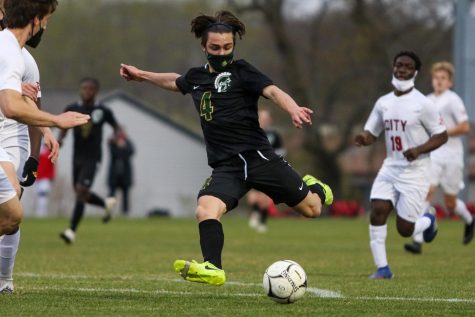
“DI is the most competitive, and that’s usually at bigger schools,” Cohen Suarez said. “DIII is usually smaller schools and is less competitive.”
According to Peyton Steva ’19, who ran track at DI University of Northern Iowa and currently runs at NJCAA DII Indian Hills Community College, there is little distinction between the competitiveness of these programs.
“There is little to no difference between DI, DII, DIII and JUCO,” Steva said. “Everyone participating in a sport, no matter the level, is there because they want to be a part of that sport at the highest level possible.”
Along with this decision, some student-athletes face the stigma that comes with attending a lower division college.
Nola Femino ’21 committed to swim DIII at Calvin University. While she believes the stigma exists, she finds that athletes have personal reasons for choosing their college.
“I think that a lot of times, DI is extremely demanding, especially with college,” Femino said. “I’m just excited to swim in college, and I wanted to have a balance between college and social life and [swimming]. I felt like DIII gave me a good option for that.”
One of the main reasons Femino chose Calvin University was its resources, including its athletics complex and training programs.
“They’re a private college, so they have a lot of funding that goes into their DIII programs,” Femino said. “They do a lot of stuff that DIII schools don’t [usually] do, like training trips and promo days, so I liked that because it was the best of both worlds.”
Doug Wagemester is the athletics director at Kirkwood Community College, a 2-year school that is a part of the NJCAA and competes in the Iowa Community College Athletic Conference.
According to Wagemester, community college programs can be cost-effective, making them the more affordable option for most.
“Our cost compared to DIII schools [is cost-effective] for sure because they don’t offer athletic scholarships,” Wagemester said. “We can give better financial packages than some DI schools.”
Wagemester estimates 10% to 15% of Kirkwood’s athletes either transfer in from a 2-year college or transfer back from a 4-year college. Additionally, more than 90% of athletes transfer out of Kirkwood.
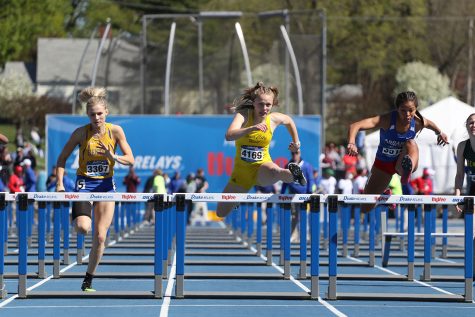
Wagemester believes some players attend a community college as a step towards attending their preferred division later on.
“Maybe they’re not getting recruited at the level they’d like and think community college could be a path to something they’re looking for,” Wagemester said.
Seybian Sims ’17 attended Kirkwood Community College before transferring to North Dakota State University, where he currently plays DI basketball. Going into Kirkwood, Sims planned to graduate after two years and then transfer to a school at the DI level.
“We had two amazing seasons [at Kirkwood], and North Dakota reached out and offered me a scholarship,” Sims said. “I was there for a year, and now I plan on playing at the University of Northern Kentucky for my remaining two years.”
Despite their athletic ability, lower division programs may offer more flexibility for athletes. Steva decided to transfer from a DI school to a junior college due to personal reasons.
“I moved to Indian Hills not because I wasn’t capable of competing at the DI level,” Steva said. “I just had a lot of things going on in my personal life that changed the direction my life was going in, so I took a step back from NCAA DI and moved to JUCO.”
As a junior, Cohen Suarez is in the process of deciding what college to attend. According to him, there is a natural difference in skill level between the collegiate divisions.
“On a general basis, the most skillful players try to play in the highest division, and people try to play in the highest division that they can,” Cohen Suarez said.
Soccer player Corentin Charles ’23 believes this stigma may exist due to a pressure to succeed.
“I think the stigma exists because we as a society always strive to be the best of the best, and we very easily assume that anything other than the top isn’t worth it or serious,” Charles said.
Wagemester, who has been coaching at Kirkwood for 23 years, believes the stigma remains for community colleges because of flawed perceptions.
“There is a bit of a stigma with the community college experience,” Wagemester said. “A lot of times when [people] say, ‘community college,’ they’ll say well, I’m thinking of two buildings downtown and academically underprepared students … That is not the case, and we’ve been working hard at that. I think [the stigma] has changed in the last 20 years, but certainly, people who don’t educate themselves could be misled that way.”
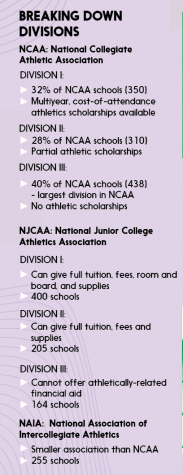
Steve Bergman, West High’s boys basketball coach, also believes students’ perceptions of lower-division athletics are skewed.
“I think it’s because they grew up here, and so their vision of college basketball is Big 10, Iowa,” Bergman said, “and I don’t think they realize how exciting or how competitive DIII basketball is. It’s very good basketball, and it’s well-attended.”
In the decision process, Bergman has found some athletes are reluctant to commit to DIII schools because of this reason.
“We have a hard time getting kids to go DIII and play basketball,” Bergman said. “If DIII is their option, they probably don’t play.”
West High Athletic Director Craig Huegel does not see a valid reason for the stigma. No matter the level of the program, he believes all student-athletes should take advantage of the opportunities given to them.
“There is a stigma out there that, if it’s not a DI athletic scholarship, it somehow means less, which I’ve never quite understood,” Huegel said. “Anybody who gets an opportunity, whether it’s at a community college, an NAIA school, a DIII school [or] DII, those are great opportunities.”
Huegel also believes lower-division programs have undoubtedly achieved a high level of success.
“There are a lot of DIII NAIA schools that do things really well,” Huegel said, “and, conversely, there may be DI schools that have not established that culture of achievement.”
Wagemester believes the stigma has evolved over the years, with more athletes being open to continuing their athletic success through various paths.
“Over time, with some funding from states and some exposure … what these kids are doing and what we’re doing to prepare them for the next level has opened people’s eyes, and hopefully more in the future,” Wagemester said.
Ultimately, Huegel hopes athletes will value what is important to them in the future.
“I would encourage our student-athletes to ignore the noise about, ‘well, it’s not a DI school so it must not be good.’ That is the biggest myth.” Huegel said. “It’s more about what is the right fit for you. This is your experience as an athlete; you have to be the one that’s comfortable with it.”
Your donation will support the student journalists of West High School. Your contribution will allow us to purchase Scholarship Yearbooks, newsroom equipment and cover our annual website hosting costs.

(she/her) Soomin Koh is a senior at West, and it is her second year on print publication staff as a co-profiles editor. In her free time,...
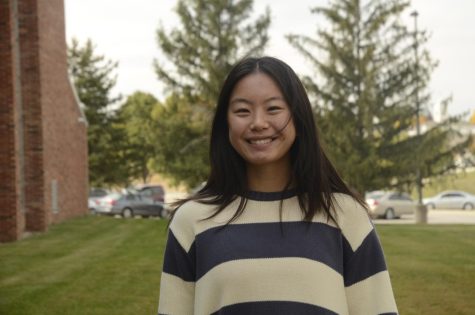
(she/her) Heidi Du is a senior and this is her third year on staff and second year as copy editor of the newsmagazine. Outside of the newsroom, she can...
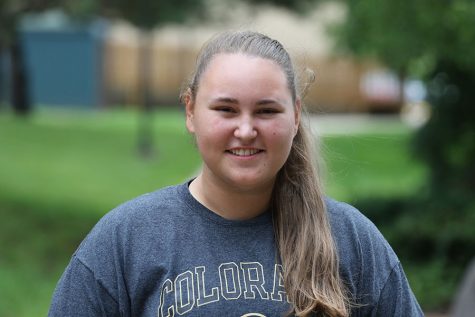
Kara is a senior at West and this will be her third year on staff. She is the Online Editor-in-Chief and Co-Sports Editor this year. When Kara isn't covering...

(she/her) Xiaoyi Zhu is a senior at West and this is her third year on staff as design editor. In her free time, she enjoys watering her new plant aloe...
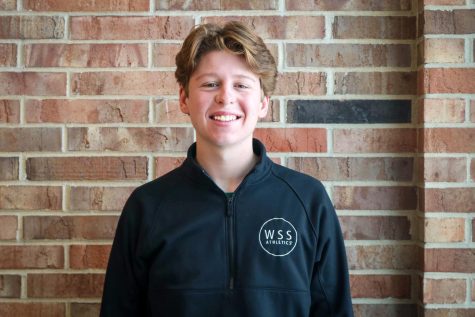
Owen Aanestad is a senior at West. This is his third year on staff working for the online publication as the online editor-in-chief In addition to playing...



